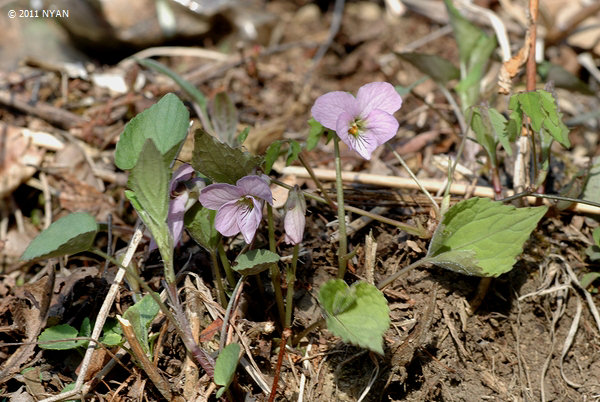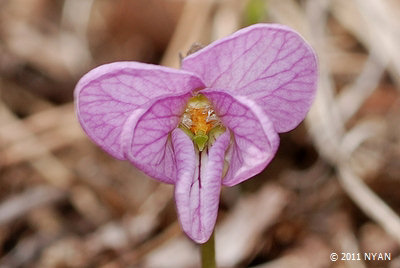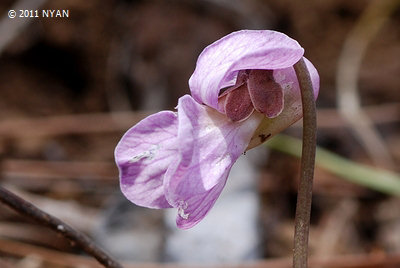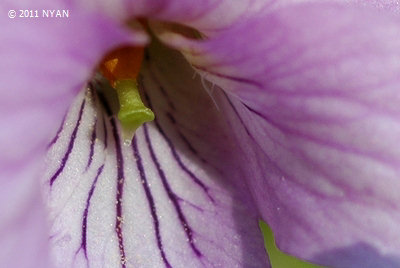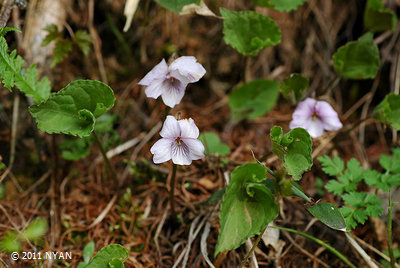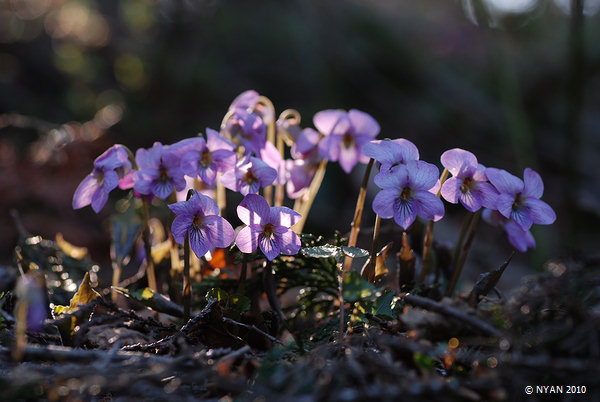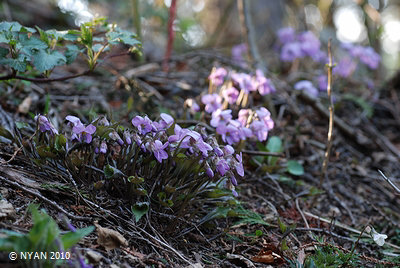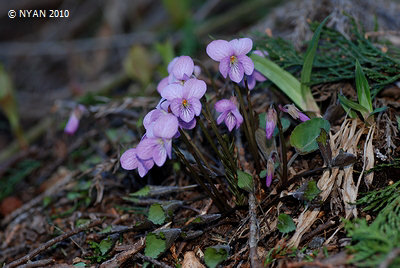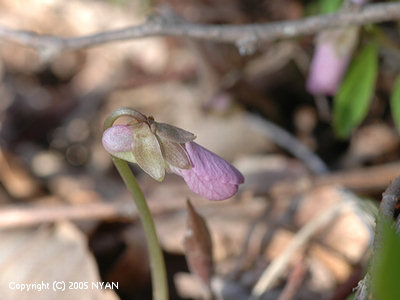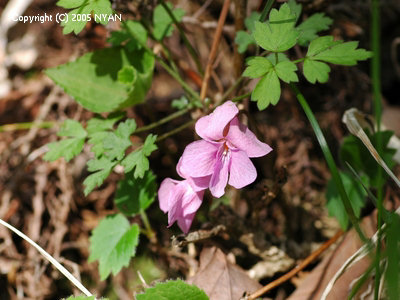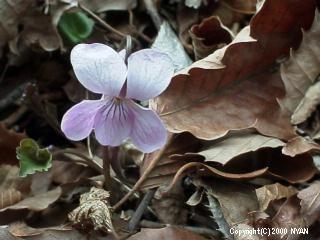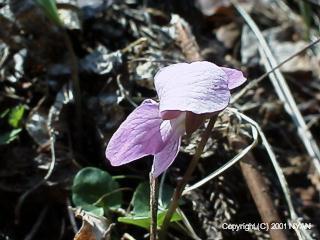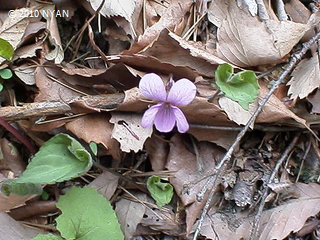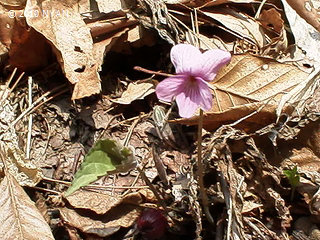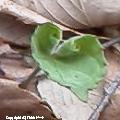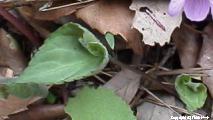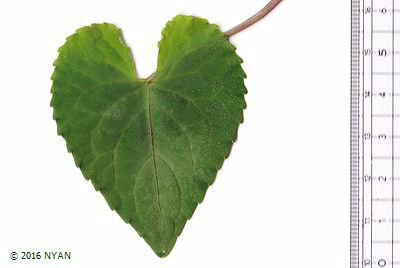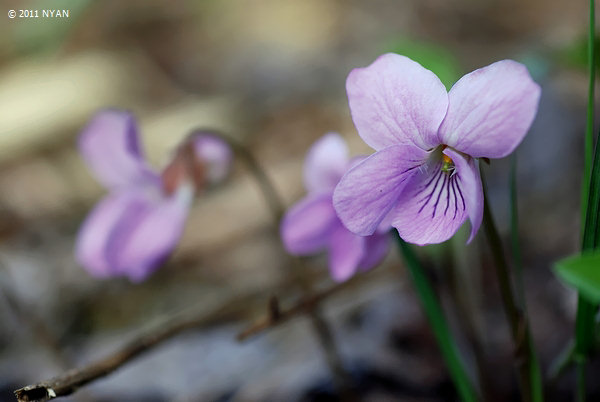| Section | Vaginatae W. Becker | |
|---|---|---|
| Scientific Name | Type species | Viola rossii Hemsley ex Forbes et Hemsley, : {Akebobo Sumire} Published in: F. B. Forbes & W. B. Hemsley, J. Linn. Soc., Bot. 23:54. (1886) |
| Variety | ||
| Form |
Viola rossii f. atro-purpurea (Nakai) F.Maek., : {Kurobana Akebobo Sumire} Published in: Enum. Spermatophytarum Japon. 3: 215 (1954) Viola rossii f. lactiflora (Nakai) Hiyama ex F.Maek., : {Sirobana Akebobo Sumire} Published in: Enum. Spermatophytarum Japon. 3: 215 (1954)
|
|
| Synonym |
Viola franchetii H.Boissieu Published in: Bull. Soc. Bot. France 47:321. (1901)
Viola matsumurae Makino Published in: Bot. Mag. (Tokyo) 16:134. (1902)
Viola rossii f. longifolia Hashimoto & Serizawa
|
|
| Origin | Viola rossii : Originated from a person's name "H. J. Ross (1820-1902)", British plant collector. | |
| Common names | 【Chinese】辽宁堇菜 liao ning jin cai、【Korean】 고깔제비꽃 | |
| Stalk Form | The individual leaves and flowering stalks emerge directly from the rootstock. | |
| Habitat | Bright and dry forest and forest edge. They are found on the slope where fallen leaves piled up (As the photograph). | |
| Distribution | Japan domestic | Distributed over the inland area from the Hokkaido southern part to Kyushu central part. Comparatively, it is few in western Japan. |
| Japan overseas | Distributed from the Korean Peninsula, China to the Russian border. | |
| Others | ||
| Flower | Shape | The large wheel of the soft-image flower, which is pink roughly in the circularity of the whole flower is characteristic. |
| Color | Basically, color is pink. But, there is little change in color from near white color to red bean color. The flower stem is brownish. | |
| Spur | Short and thick. | |
| Season | Normal. | |
| Stigma | Inverted triangle. | |
| Aromatic | Some are fragrant and some are not. | |
| Others | Size of the petals are all approximately equal. Sepals do not have large cuts. Appendages of the sepals are whole edge. | |
| Leaf | Shape | Sharp pointed heart or circular heart. The base is heart-shaped. |
| Color | Light green. On the surface, very short hair grows. Fine hair on the back side is said to disappear after flowers. | |
| Others | Finally expand after flowers. | |
| Seed | Shape | Large. Inverse egg shape. |
| Color | Seed: white. | |
| Others | Fruits have brown spots. | |
| Characteristics of roots | Tthick and white. | |
| Endangered Information | Akita:ThreatenedⅠ, Saitama:Near threatened, Fukui:ThreatenedⅡ, Siga:ThreatenedⅠ, Kyoto:ThreatenedⅡ, Osaka:ThreatenedⅠ, Nara:ThreatenedⅠ, Hyogo:ThreatenedⅡ, Tottori:Near threatened, Yamaguchi:ThreatenedⅡ, Kochi:ThreatenedⅠ, Fukushima:ThreatenedⅠ, Kumamoto:Near threatened, Nagasaki:ThreatenedⅠ | |
| Type Specimen | China (Lectotype) | |
| Chromosome Number | 2n=24 | |
| Reference Information | ||
| Others | Viola vaginata grows in with the side of Japan Sea, Viola rossii grows in with the inland area, Viola bisseti grows in with Pacific Ocean side. | |

